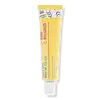What's inside
What's inside
 Key Ingredients
Key Ingredients

 Benefits
Benefits

 Concerns
Concerns

No concerns
 Ingredients Side-by-side
Ingredients Side-by-side

Water
Skin ConditioningGlycerin
HumectantC15-19 Alkane
SolventSqualane
EmollientButyrospermum Parkii Butter
Skin ConditioningNiacinamide
SmoothingGlycol Palmitate
EmulsifyingCetearyl Alcohol
EmollientHydroxyethyl Acrylate/Sodium Acryloyldimethyl Taurate Copolymer
Emulsion StabilisingCapryloyl Glycerin/Sebacic Acid Copolymer
Skin ConditioningSimmondsia Chinensis Seed Oil
EmollientCoco-Glucoside
CleansingAcetic Acid
BufferingAcetyl Hexapeptide-8
HumectantAnhydroxylitol
HumectantCaffeine
Skin ConditioningChrysin
Skin ConditioningDiheptyl Succinate
EmollientEthylhexylglycerin
Skin ConditioningLactic Acid
BufferingPalmitoyl Tetrapeptide-7
Skin ConditioningPentylene Glycol
Skin ConditioningRosmarinus Officinalis Leaf Extract
AntimicrobialSodium Hydroxide
BufferingSorbitan Isostearate
EmulsifyingTocopherol
AntioxidantXylitol
HumectantXylitylglucoside
HumectantPhenoxyethanol
PreservativePotassium Sorbate
PreservativeWater, Glycerin, C15-19 Alkane, Squalane, Butyrospermum Parkii Butter, Niacinamide, Glycol Palmitate, Cetearyl Alcohol, Hydroxyethyl Acrylate/Sodium Acryloyldimethyl Taurate Copolymer, Capryloyl Glycerin/Sebacic Acid Copolymer, Simmondsia Chinensis Seed Oil, Coco-Glucoside, Acetic Acid, Acetyl Hexapeptide-8, Anhydroxylitol, Caffeine, Chrysin, Diheptyl Succinate, Ethylhexylglycerin, Lactic Acid, Palmitoyl Tetrapeptide-7, Pentylene Glycol, Rosmarinus Officinalis Leaf Extract, Sodium Hydroxide, Sorbitan Isostearate, Tocopherol, Xylitol, Xylitylglucoside, Phenoxyethanol, Potassium Sorbate
Water
Skin ConditioningPropanediol
SolventButylene Glycol
HumectantGlycerin
Humectant1,2-Hexanediol
Skin ConditioningSodium Polyacryloyldimethyl Taurate
Emulsion StabilisingCetyl Ethylhexanoate
EmollientCorn Starch Modified
AbsorbentIlex Paraguariensis Leaf Extract
PerfumingCetearyl Olivate
Sorbitan Olivate
EmulsifyingPanthenol
Skin ConditioningAllantoin
Skin ConditioningAdenosine
Skin ConditioningTocopherol
AntioxidantHelianthus Annuus Seed Oil
EmollientHydrolyzed Hyaluronic Acid
HumectantSodium Hyaluronate
HumectantHyaluronic Acid
HumectantCaffeine
Skin ConditioningAcetyl Tetrapeptide-5
HumectantCichorium Intybus Root Extract
MaskingWater, Propanediol, Butylene Glycol, Glycerin, 1,2-Hexanediol, Sodium Polyacryloyldimethyl Taurate, Cetyl Ethylhexanoate, Corn Starch Modified, Ilex Paraguariensis Leaf Extract, Cetearyl Olivate, Sorbitan Olivate, Panthenol, Allantoin, Adenosine, Tocopherol, Helianthus Annuus Seed Oil, Hydrolyzed Hyaluronic Acid, Sodium Hyaluronate, Hyaluronic Acid, Caffeine, Acetyl Tetrapeptide-5, Cichorium Intybus Root Extract
 Reviews
Reviews

Ingredients Explained
These ingredients are found in both products.
Ingredients higher up in an ingredient list are typically present in a larger amount.
Caffeine is most associated with coffee, tea, and cacao. In skincare, it helps with calming inflammation and is rich in antioxidants.
While caffeine is used to treat cellulite and and dark circles, further studies are needed to prove this. It has been believed to help with these skin conditions due to its ability to dilate blood vessels and increase blood flow.
Some studies are looking into caffeine's ability to protect against UV rays.
Learn more about CaffeineGlycerin is already naturally found in your skin. It helps moisturize and protect your skin.
A study from 2016 found glycerin to be more effective as a humectant than AHAs and hyaluronic acid.
As a humectant, it helps the skin stay hydrated by pulling moisture to your skin. The low molecular weight of glycerin allows it to pull moisture into the deeper layers of your skin.
Hydrated skin improves your skin barrier; Your skin barrier helps protect against irritants and bacteria.
Glycerin has also been found to have antimicrobial and antiviral properties. Due to these properties, glycerin is often used in wound and burn treatments.
In cosmetics, glycerin is usually derived from plants such as soybean or palm. However, it can also be sourced from animals, such as tallow or animal fat.
This ingredient is organic, colorless, odorless, and non-toxic.
Glycerin is the name for this ingredient in American English. British English uses Glycerol/Glycerine.
Learn more about GlycerinTocopherol (also known as Vitamin E) is a common antioxidant used to help protect the skin from free-radicals and strengthen the skin barrier. It's also fat soluble - this means our skin is great at absorbing it.
Vitamin E also helps keep your natural skin lipids healthy. Your lipid skin barrier naturally consists of lipids, ceramides, and fatty acids. Vitamin E offers extra protection for your skin’s lipid barrier, keeping your skin healthy and nourished.
Another benefit is a bit of UV protection. Vitamin E helps reduce the damage caused by UVB rays. (It should not replace your sunscreen). Combining it with Vitamin C can decrease sunburned cells and hyperpigmentation after UV exposure.
You might have noticed Vitamin E + C often paired together. This is because it is great at stabilizing Vitamin C. Using the two together helps increase the effectiveness of both ingredients.
There are often claims that Vitamin E can reduce/prevent scarring, but these claims haven't been confirmed by scientific research.
Learn more about TocopherolWater. It's the most common cosmetic ingredient of all. You'll usually see it at the top of ingredient lists, meaning that it makes up the largest part of the product.
So why is it so popular? Water most often acts as a solvent - this means that it helps dissolve other ingredients into the formulation.
You'll also recognize water as that liquid we all need to stay alive. If you see this, drink a glass of water. Stay hydrated!
Learn more about Water